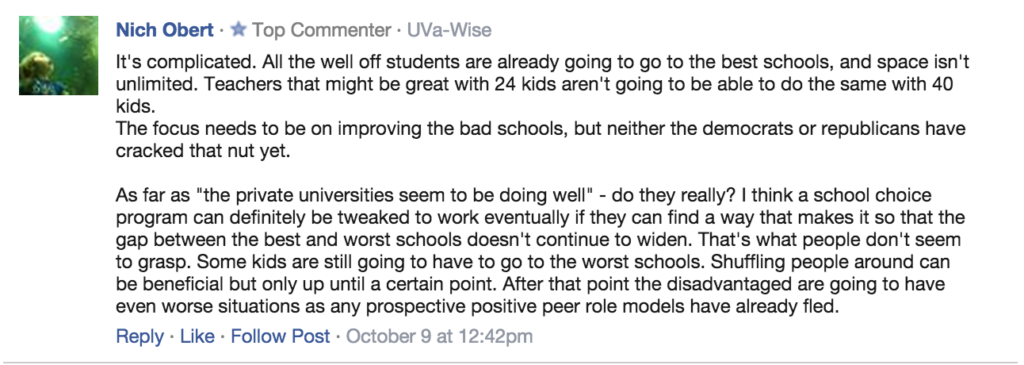Friday Freakout: What to Do with Struggling Schools
This week’s Vice.com article, “The Paradox of School Choice,” tells the story of a young couple who, despite the premium they pay in home costs, still found it difficult to enroll their younger brother in their (at-capacity) public school of choice. Even in Ohio’s educational environment, which ranks in the top 10 states of the Center for Education Reform’s Parent Power Index, the other school options were not up to their standards.
In today’s freakout, we think we can propose some reasonable solutions to this common conundrum, some of which might actually be in line with school choice opponents’.

Realistically, there were struggling schools before school choice. There are “bad” schools in our ZIP Code-assignment system now. And, as school choice expands, some might still attend (what others perceive to be) the “worst” schools.
Of course, this requires a conversation on who defines what it means to be “struggling,” “bad,” or “worst.” Policymakers and parents have different definitions for each.
For this discussion’s sake, the fact is we live in an imperfect world. To a degree, there always will be schools that struggle more than others. Our focus should be to minimize that number while also working to create better educational opportunities.
To that end, we are not saying let the market shuffle itself around until it reaches stasis, then wipe our hands clean; job well done! Rather, once a universal school choice system helps families reposition themselves into the learning environments they know are best for them, we will have a much better picture of some particular schools’ (and students’) needs.
Perhaps struggling schools might need a new focus, mission, and culture. Or maybe a school could use different management. And yes, some of those schools might need increased per-pupil funding, which they can get from the savings school choice will provide.
Just as there are no one-size-fits-all schools, nor are there one-size-fits-all solutions. There is more than one way to help disadvantaged students stuck in “bad” schools. Whether solutions include bringing in more inspirational peer role models as tutors in a school-to-school partnership program, trying different teaching techniques, giving students and teachers flexible hours, adopting a boarding school-type environment, hiring more specialized social workers, or any number of other things—struggling schools should have the freedom to customize solutions without forcing all other public schools to adopt identical regulations. And, remember, there are countless nonprofits working to help disadvantaged students and struggling schools today. In a universal school choice environment, there is no reason to expect such institutions will go away.
For example, in our headquarter city of Indianapolis, a partnership between Indianapolis Public Schools (IPS) and The Mind Trust, a nonprofit incubator, is encouraging local and national educators to propose ways to improve public educational opportunities for residents. Certainly such public-private partnerships can exist elsewhere, but there first must be an openness toward taking nontraditional routes for turning around the “worst” schools.
Just as school choice is a parent by parent, student by student, decision, it also should be a school by school determination as to how some models can be improved.
In the end, we believe a universal school choice system—in which parents match their children to suitable schools—will better identify where the struggles exist in education, both among students and schools.




